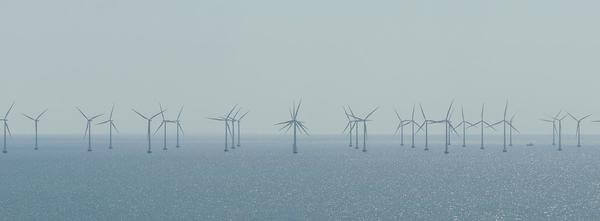News Release from windfair.net
Wind Industry Profile of
Baltic Sea to become international offshore wind energy hotspot
On Tuesday, the Baltic Energy Security Summit was held in Copenhagen, attended by representatives of eight Baltic Sea countries. In order to strengthen European energy security, a joint declaration was signed, which envisages a massive expansion of renewable energies throughout the Baltic Sea region. The focus is on green hydrogen and offshore wind power as an energy provider.
“We have agreed to increase offshore wind in the Baltic Sea seven-fold by 2030,” said Danish Prime Minister Mette Frederiksen, according to Danish medium The Local. 20 gigawatts are to be generated by 2030, and by 2050 the potential would be as much as 93 gigawatts, as the participating states of Denmark, Estonia, Finland, Germany, Latvia, Lithuania, Poland and Sweden emphasized.
Russia was the only Baltic Sea state not present at the meeting. No wonder, since the alliance wants energy security without the warmonger from the east. "We are the frontline of European energy security," Frederiksen stressed. “In this war Putin is using energy as a weapon and has put Europe, as we all know, on the brink of an energy crisis with skyrocketing energy prices." "Putin's attempt to blackmail us with fossil fuels is failing," Ursula van der Leyen, president of the European Commission, said on the sidelines of the summit.
Already before the actual summit, Denmark and Germany have shown what the future of the Baltic Sea should look like. German Economics Minister Robert Habeck and his Danish counterpart Dan Jørgensen signed an agreement worth billions of euros for the development of Bornholm Energy Island by the two wind energy pioneer countries.
For some time, Denmark has been working on plans to convert Bornholm Island, located in the northern Baltic Sea off the Swedish coast and until now known primarily as a tourist destination, into an energy island. These plans are now becoming concrete: up to 3 GW of offshore wind power plants are to be built around the island by 2030. Power lines will be drawn to Germany and Denmark, allowing both countries to share the green power generated and the cost of grid infrastructure. The goal of the cooperation is to enable electricity imports based on renewable energy and to advance energy security and climate protection in Europe, according to the German Ministry of Economics.
To advance Bornholm's development as a wind energy hub, a number of business and research partners have already joined forces as a foundation, including the Technical University of Denmark (DTU), Ørsted, Siemens Gamesa, Energinet, the Municipality of Bornholm, the electricity utility Bornholms Energi & Forsyning and the Port of Rønne, which will work with a number of authorities.

All Baltic Sea countries have presented plans to develop an offshore wind industry in recent months (Image: Pixabay)
“Access to energy from wind farms and testing facilities where researchers, businesses, and the authorities can interface are crucial to the shift to renewable energy. This is the reason we have banded together with a number of other partners to get Baltic Energy Island off the ground. With the foundation as the coordinating organization, Bornholm will become a leading international innovation hub in the development of green technologies and energy islands,” said DTU professor Jacob Østergaard.
To connect Bornholm to the German power grid, a 470-kilometer submarine cable must be laid. By 2030, 4.5 million households will be supplied with electricity from Bornholm, Reuters reports. "We have a unique opportunity to develop technologies for the energy system of the future. This is something that we must do together. We will be working across sectors, research institutions, and national borders, and Baltic Energy Island will serve as a strong platform for that work," said DTU’s President, Anders Bjarklev.
The decisions are a continuation of the measures taken in Europe to ensure energy security and advance the energy transition. Back in May, the heads of government of the North Sea states of Germany, Denmark, the Netherlands and Belgium also agreed ambitious expansion targets and stronger cooperation in the area of offshore wind at a summit in Esbjerg. Further measures are likely to follow in the coming weeks.
- Author:
- Katrin Radtke
- Email:
- press@windfair.net
- Keywords:
- Baltic Sea, wind energy hub, offshore, Baltic States, Denmark, Germany, Bornholm, Energy Island, development, wind farm, GW, capacity, Russia


























